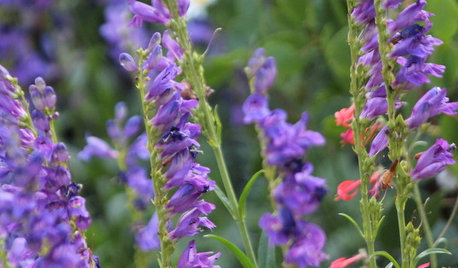Apricot fungus (shothole?) infection control - spreading
melissascop
14 years ago
Related Stories

GARDENING GUIDESTree Care: Common Tree Diseases and What to Do About Them
Learn to recognize trees that may be affected by diseases or pests so you can quickly take action
Full Story
GARDENING GUIDESGreat Design Plant: Bugle Weed, a Quick Ground Cover
It’s highly adaptable, suppresses weeds, reduces erosion and provide weeks of bright flowers. Just watch for invasiveness
Full Story
SPRING GARDENING7 Spectacular and Practical Spring-Flowering Trees
Put on a beauteous show in the garden with a landscape tree awash in flowers — just do your homework first
Full Story
WINTER GARDENINGPruning Secrets for Exquisite Roses
Encourage gorgeous blooms year after year with this time-tested advice on how to prune your rosebush in winter for health and shape
Full Story
GARDENING GUIDESWhat Kind of Roses Should You Grow?
Want to add the beauty of roses to your garden? Find out which ones, from old-fashioned to modern, are right for you
Full Story
GARDENING GUIDESHow to Keep Your Citrus Trees Well Fed and Healthy
Ripe for some citrus fertilizer know-how? This mini guide will help your lemon, orange and grapefruit trees flourish
Full Story
LIFESimple Pleasures: Put On Your Slippers
Preserve the peace and protect your floors and carpets by turning your home into a no-shoes zone
Full Story
FALL GARDENING7 Reasons Not to Clean Up Your Fall Garden
Before you pluck and rake, consider wildlife, the health of your plants and your own right to relax
Full Story
GARDENING FOR BUTTERFLIESA Quick-Start Guide to Bird-Watching for Fun and Learning
Set out some seed and grab your field guide. Bird-watching is an easy, entertaining and educational activity for the whole family
Full Story
CALIFORNIA GARDENINGCalifornia Gardener's August Checklist
Pick up some great ideas from these travel-inspired plantings, even if your vacation is in your own backyard
Full StoryMore Discussions







Scott F Smith
melissascopOriginal Author
Related Professionals
Beachwood Landscape Architects & Landscape Designers · Lakeland Landscape Contractors · Athens Landscape Contractors · Federal Way Landscape Contractors · Forest Hills Landscape Contractors · Hayden Landscape Contractors · Lebanon Landscape Contractors · Mason Landscape Contractors · New Cassel Landscape Contractors · Nutley Landscape Contractors · Parkland Landscape Contractors · San Bruno Landscape Contractors · Soddy Daisy Landscape Contractors · West Orange Landscape Contractors · Clearfield Landscape ContractorsScott F Smith
jellyman
scrugs1
prunepicker